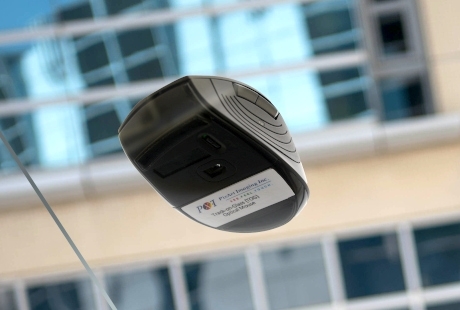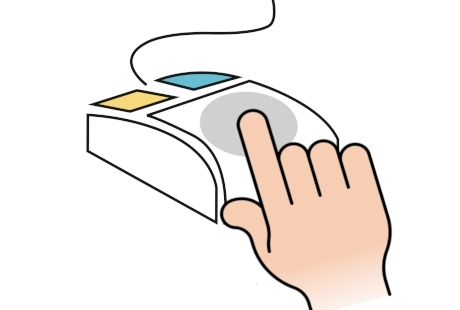- Home
- Applications
- Computer & Peripherals
- Advanced Mice
Computer & Peripherals
Gaming Mouse
PixArt invents one of the finest quality gaming mouse chips for professional gaming mice makers, who are devoted to pampering their e-sport players with the best gaming experience ever.
With core design principles to deliver ultimate tracking speed, acceleration, resolution, and accuracy, our gaming mouse sensors have long been working as gamers' best companions in the past 20 years for all types of PC games. From MOBA (Multi-player Online Battle) and MMO (Massively Multi-player Online) games that require high speed and high resolution for effective commanding to FPS (First Person Shooter) games which value precision more than any other characteristics, our first-class gaming mouse chips are fully equipped with great acceleration and agility for its user to roar through all games.
To add more flexibility and to facilitate further implementation, PixArt’s gaming mouse chips come with an angle snap function and self-adjusting variable-frame-rate algorithms and have programmer-definable parameters such as angles, resolution, lift cut-off detection, and sleep/wake up time. It is also at the mouse system developers' discretion whether to allow end-users to customize these parameters too.
Indulge your meticulous gamers with one of PixArt's professional gaming mouse chips. Please click the links on the side to find out more about our wired and wireless gaming mouse sensor products.
Related Products:
- PMW3389DM-T3QU (wired gaming)
- PMW3360DM-T2QU (wired gaming)
- PMW3330DM-TZQU (wired gaming)
- PAW3327DB-TWQU (wired gaming)
- PMW3325DB-TWV1 (wired gaming)
- PMW3325DB-TWMU (wired gaming)
- PAW3309DH-TKSL (wired gaming)
- PAW3335DB-TZDU (wireless gaming)
- PAW3370DM-T4QU (wired gaming)
- PAW3399DM-T4QU (wired and wireless gaming)
- PAW3395DM-T6QU (wired and wireless gaming)
Wireless Mouse
With a burden-free pairing process, more affordable prices, and the universal need to remove excessive cords from busy desktops, wireless mice are by far the most popular mice when it comes to day-to-day internet surfing and office usage.
Despite hundreds of wireless mouse models in the market, the core values of general wireless mouse chips can be summarized into three key factors – surface coverage, linearity, and low power consumption. Comprehensive surface coverage is a result of high sensitivity and an advanced in-built computing algorithm, which allows the mouse sensor to detect from any surface including office desktops, carpets, and even glass. Linearity, on the other hand, determines how smooth a mouse can be and may greatly affect the user's overall experience. There is also the need for low consumption of power - which is probably one of the most important deal makers for most users, as it determines how long the battery will last before the next replacement (i.e. the ongoing maintenance costs).
PixArt’s Wireless Mouse series over-achieve these core values with diversified choices in specifications. With highlights across different surface coverage capabilities, linearity, and low power consumption (can go as low as 0.6mA), we provide products in a wide variety of chip packages to suit all application purposes.
For more information about our wireless mouse chips, please check our related product pages to the left.
Wired Mouse
Wired mice are by far the most commonly used mouse type. They do not only provide cost-effective choices, but their plug-and-play nature has brought great convenience to worldwide users. With the popularity and standardization of wired mice, PixArt has taken a step forward to combine the mouse sensors with USB interfaces to form highly integrated USB SoC wired mouse chips. These powerful IC products that incorporate the necessary USB interface and firmware functionalities into a single chip are designed to save customers’ precious engineering resources and shorten their project process and allow them to enjoy the pure fun of new product development.
Through our many years of fine-tuning, PixArt’s USB SoC products perform exceptionally well in integration, compatibility, and stability. They prove to have excellent compatibility with a wide range of motherboards, chipsets, BIOS environments, and USB chips. Thus, they allow our customers to build their system functionalities on top of stable, smooth, and well-supported chip platforms.
Please visit the product pages to the left for more information about our mouse products.
Related Products:
Track-on-Glass (TOG) Mouse
The mobility and flexibility of personal electronics are becoming increasingly important to users in this versatile world. While laptops do get much thinner and easier to carry around in the last decade, users are still searching for matchable mice that are not just portable but can operate on any surface. So what has been holding back the development of our best computer buddies?
A disturbing obstacle that has almost been reluctantly accepted throughout the history of the optical mouse is the difficulty of tracking on glossy surfaces. It is much harder for mouse sensors to detect on surfaces with limited particles or unobvious texture definitions (e.g., glass, lacquered benchtop, and smooth metallic tables) because they offer far fewer detection points for sensors to “cling to” during placement computation.
As the world’s leading sensory IC designer, PixArt is proud to resolve the dilemma with our Track-on-Glass (TOG) technology. The TOG technology utilizes powerful sensing capabilities to peer inside any surfaces for microscopic imperfections, and lock onto them as the coordinate origin to track the next mouse movement. With the highly efficient placement mechanism achievable from PixArt’s cutting-edge technological know-how, the TOG sensors are able to overcome the “glass ceiling” to detect on all types of surfaces with uncompromised precision and accuracy.
With the extraordinary TOG mice, the time to ditch clumsy mouse pads has finally arrived!
Related Products:
Touch Mouse
The latest released touch mice by various top-tier mouse makers have challenged our imagination as to what computer mice could do. With matrix of capacitive touch electrodes disperse across the finger area at the top, the state-of-art control device utilizing touch-based technology could impress its user with a handful of intuitive and mind-blowing control shortcuts. Users could easily perform functions such as switch among active computer programs, hyperscroll, maximise/restore windows and display all windows on the desktop merely through one-to-three-finger movements on the capacitive touch areas, without having to physically move the mice at all.
To accurately track and interpret complicated finger commands, having intelligent, sensitive yet compact chips to begin with are vital. PixArt's renowned CFN (Capacitive Finger Navigation) chip products have long been the answer to top-end touch mice makers in the market. With core sensing capabilities and in-built algorithms such as fault suppression sensing, the chips are crafted to deliver amazing user experiences in terms of speed, accuracy and smoothness. The powerful chips also support scrollbar and whole-area touch to fully utilize the generally limited navigation space on computer mice. Despite of all the functionalities PixArt's Capacitive Finger Navigation chips have to offer, the power consumption of the chips are kept low to maximize durability.
For more information, please visit our related CFN product pages to the left.






